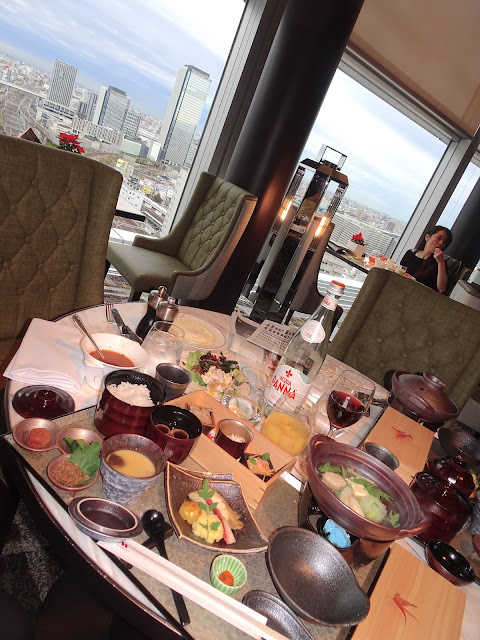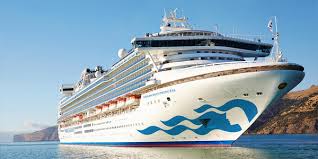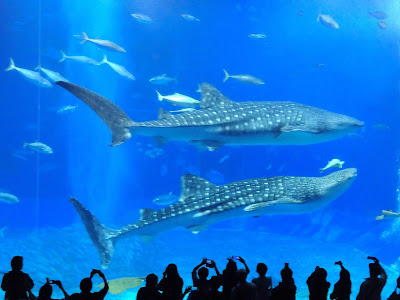
On this nostalgic Tuesday, I return to our first Diamond Princess cruise that was close to starting the Covid Pandemic. As you know if you read this blog, two weeks from today we again board the Diamond Princess for a 9-day cruise around Japan.  But first, just one news flash. The U.S. House of Representative remained paralyzed when Congressman Jim Jordan lost the vote today to become speaker. In a way, this was embarrassing, for he walked unto the floor with a sense of confidence, but was rebuffed by 20 Republicans who voted for someone else. Democrats all voted for Hakeem Jeffries, who beat Jordan, 212-200. But with no majority vote of 217 or more, no winner. Next vote will come at 11AM on Wednesday. I said yesterday there was no way he could prevail, and GOP sources today said that opposition to Jordan could actually grow in future votes. I still think that Kevin McCarthy will ultimately return to the speakership, with unofficial cooperation from Democrats, effectively, then a bipartisan House.
But first, just one news flash. The U.S. House of Representative remained paralyzed when Congressman Jim Jordan lost the vote today to become speaker. In a way, this was embarrassing, for he walked unto the floor with a sense of confidence, but was rebuffed by 20 Republicans who voted for someone else. Democrats all voted for Hakeem Jeffries, who beat Jordan, 212-200. But with no majority vote of 217 or more, no winner. Next vote will come at 11AM on Wednesday. I said yesterday there was no way he could prevail, and GOP sources today said that opposition to Jordan could actually grow in future votes. I still think that Kevin McCarthy will ultimately return to the speakership, with unofficial cooperation from Democrats, effectively, then a bipartisan House.
We have not toured Japan for just about four years. On 19November2019 we left Honolulu on Japan Airlines for Tokyo.

We stayed at the Yokohama Bay Sheraton, and will again use this hotel as our base of operations. We had a view of Mount Fuji from our room.
Yokohama, which means horizontal beach, is just south of Tokyo, and is the second largest city in the country. This is where in 1853 Commodore Matthew Perry demanded that Japan open its ports for commerce. The 13th Tokugawa
Shogun, Iesada, acceded in 1854. He was born in 1824 as the son of Tokugawa Ieyoshi and a concubine. Iesada was a weak person, Perry came at the right time, for in 1854 came a
series of earthquakes:
- 9July1854: Iga-Ueno earthquake, 7.25 magnitude, killing 995.
- 23December1854: Tokai quake, 8.4, which killed 2,000.
- 24December1854: Nankai quake, also 8.4, killing 10,000.
- 26December1854: Hoyo Strait quake, 7.4.
- Also, 11November1855: Edo quake, 7.0, 6,641 deaths.
Ultimately in 1868, the 15th Tokugawa shogun, Yoshinobu, resigned, restoring power to
Emperor Meiji, #122, initiating the Meiji era to 1912, a period when Japan began modernization and westernization. The capitol in 1868 was moved from Kyoto to Edo, now Tokyo. Kyoto had been capitol from 794, nearly a millennium. He ruled from the days of the samurai to Japan becoming one of the world's great powers. Actually, he was throughout his reign known as Mutsuhito, and Meiji, or Enlightened Rule, came at the end.
I might mention that the first day of our stay in Japan, I noticed Tropical Storm Fung-Wong forming east of Taiwan, with a projected path over Okinawa, then on to Japan. These were our cruise stops.

Lucky for us, but Fung-Wong never did attain typhoon strength, and only peripherally affected our cruise.
We walked to Yokohama pier, where we saw the Diamond Princess.
We then took off on a
7-day Japan Rail Pass to view the Fall colors, first dropping by
Sendai where we had our traditional Japanese Wagyu Beef meal at Iseya, located at the train station.
We stayed at the Marriott Associa Hotel at Nagoya Station. Their executive club is the best we ever experienced, ending with a fabulous Japanese breakfast the following morning.
On to Hiroshima and Shukkeien, a Japanese Garden.
On day 10 of our Orient trip, we
boarded the Diamond Princess.
A stop in Okinawa took us to Churaumi Aquarium, the best in Japan.
Returning to Yokohama, we took a walk around, focusing on Sankeien Garden. Spectacular colors.
And this was not the end of our Orient trip, for we flew on to Seoul.
We stayed at the Sheraton D-Cube City, my favorite hotel in the country. Alas it closed during the pandemic is now an office building.
Then back through Japan to Honolulu. Home, sweet, home.
 But first, just one news flash. The U.S. House of Representative remained paralyzed when Congressman Jim Jordan lost the vote today to become speaker. In a way, this was embarrassing, for he walked unto the floor with a sense of confidence, but was rebuffed by 20 Republicans who voted for someone else. Democrats all voted for Hakeem Jeffries, who beat Jordan, 212-200. But with no majority vote of 217 or more, no winner. Next vote will come at 11AM on Wednesday. I said yesterday there was no way he could prevail, and GOP sources today said that opposition to Jordan could actually grow in future votes. I still think that Kevin McCarthy will ultimately return to the speakership, with unofficial cooperation from Democrats, effectively, then a bipartisan House.
But first, just one news flash. The U.S. House of Representative remained paralyzed when Congressman Jim Jordan lost the vote today to become speaker. In a way, this was embarrassing, for he walked unto the floor with a sense of confidence, but was rebuffed by 20 Republicans who voted for someone else. Democrats all voted for Hakeem Jeffries, who beat Jordan, 212-200. But with no majority vote of 217 or more, no winner. Next vote will come at 11AM on Wednesday. I said yesterday there was no way he could prevail, and GOP sources today said that opposition to Jordan could actually grow in future votes. I still think that Kevin McCarthy will ultimately return to the speakership, with unofficial cooperation from Democrats, effectively, then a bipartisan House.
































Comments
Post a Comment